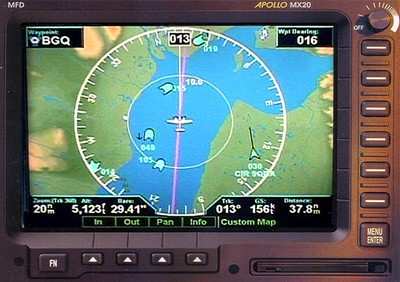Says Many Questions Remain For GA
Calling the FAA's decision-making process 'rushed,' the Aircraft
Owners and Pilots Association took note of what the agency's
awarding Thursday of a contract to build and operate the ADS-B
(automatic dependent surveillance-broadcast) ground infrastructure
to private company ITT Corporation means to general aviation...
both in the near future, and years down the line.

The contract marks a shift from traditional FAA projects, where
the contractor builds the equipment and turns it over to the
agency. As ANN reported Thursday, ITT
will own the ADS-B infrastructure, and supply aircraft position
data to the FAA.
 And while the FAA calls
ADS-B the "backbone" of its NextGen air traffic control
modernization program, "this is really just Phase One of a project
that extends out more than a decade," said AOPA President Phil
Boyer. "This won't be like the hurried Mode C transponder mandate
when Congress gave aircraft owners 18 months to equip. If ADS-B is
ultimately mandated for general aviation, it won't be until
2020."
And while the FAA calls
ADS-B the "backbone" of its NextGen air traffic control
modernization program, "this is really just Phase One of a project
that extends out more than a decade," said AOPA President Phil
Boyer. "This won't be like the hurried Mode C transponder mandate
when Congress gave aircraft owners 18 months to equip. If ADS-B is
ultimately mandated for general aviation, it won't be until
2020."
Boyer (right) says many questions remain unanswered about when
and what will be required for GA to take full advantage of ADS-B.
That's because the FAA rushed the ADS-B contract without much
consultation with the industry; in fact, the notice of proposed
rulemaking (NPRM), setting the regulations and procedures on the
transition to ADS-B for air traffic control, hasn't even been
released yet.
"To put it in pilot terms, the FAA has launched on its flight
toward NextGen without checking the weather or programming the
flight plan in the GPS," said Boyer. "We believe in the promise of
the technology and the benefits it could bring to GA pilots, but at
this point there is a degree of risk that those benefits may not
accrue."
For example, AOPA believes one of the benefits to aircraft
owners would be replacing the currently mandated Mode C transponder
with the infinitely more capable ADS-B equipment... but it hasn't
been determined whether ADS-B will ultimately replace transponders
for such vital safety systems as TCAS.
Boyer also noted ADS-B is a technology that provides the
greatest benefits to the FAA and the airlines... yet the airlines
have already expressed reservations about equipping.
"We've yet to see a business case made for either side of that
equation," said Air Transport Association President James May,
referring to the $40 billion FAA and the airline industry will
collectively spend to build and equip for NextGen.
Once standards are set and avionics manufacturers start building
in volume, though, AOPA says it may be worth the cost for some
aircraft owners to voluntarily equip with ADS-B, if the FAA holds
to its promise to provide nationwide free uplinked weather and
traffic data (FIS-B and TIS-B) in the cockpit as early as 2013.
AOPA has been a longtime advocate of satellite navigation and
ADS-B. The association's seminal report to Congress in 1990, "The
Future is Now," advocated civilian use of GPS back when it was
strictly a military system. That report also predicted using GPS to
replace radar for air traffic control surveillance.
AOPA has demonstrated ADS-B technology in its aircraft since
1999, and currently houses an ADS-B ground station at the
organization's Frederick, MD headquarters.
Some 75 percent of AOPA members have said they would be willing
to equip their aircraft with ADS-B if free weather and traffic
information were provided, and if the equipment cost was about the
same as a transponder, which it could also replace.

"We eagerly await the NPRM so that we can find out exactly where
the FAA is going with ADS-B," said Boyer. "If the promises are
delivered, general aviation will embrace the technology."
 Airborne 04.16.24: RV Update, Affordable Flying Expo, Diamond Lil
Airborne 04.16.24: RV Update, Affordable Flying Expo, Diamond Lil ANN's Daily Aero-Term (04.20.24): Light Gun
ANN's Daily Aero-Term (04.20.24): Light Gun Aero-News: Quote of the Day (04.20.24)
Aero-News: Quote of the Day (04.20.24) Aero-News: Quote of the Day (04.21.24)
Aero-News: Quote of the Day (04.21.24) ANN's Daily Aero-Term (04.21.24): Aircraft Conflict
ANN's Daily Aero-Term (04.21.24): Aircraft Conflict





